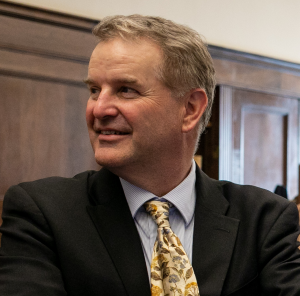When pondering the future of education, it’s understandable that most of us will slip into Utopian scenarios. Think Garrison Keiler’s Lake Wobegon, “where all the women are strong, all the men are good-looking, and all the children are above average.” The reality, of course, is always going to be different.
So it is when discussing the idea of digital equity. Every student deserves the right to high-bandwidth, solid-state, always-on access to the Internet, right? Reality check: A 2021 report from Common Sense Media found that 15 to 16 million K-12 public school students in the U.S. live in homes with inadequate internet or computing devices. This represents around 30 percent of all public school students in the U.S.
That doesn’t mean those students can’t get the education they deserve. I had the pleasure of speaking with Ryan Ross, CEO of Olivia Technologies, about their attempts to address this issue through synching techniques that don’t require access to the Internet outside the school campus. Their solution has been deployed in schools in Texas and Hawaii, where in certain areas, over 30 percent of students do not have reliable internet connectivity.

Listen here to the entire conversation and scroll down for some edited highlights:
Whether a child lacks access to the internet at home or connectivity is intermittent and limited in the classroom, Olivia is designed to work offline to its intended audience. Content is delivered through a combination of teachers and a vetted curated library of videos, podcasts, and eBooks and supports existing learning management systems, adaptive learning, and social-emotional programs.
ESN: Start off talking a little bit about where Olivia’s solutions began and where you find yourself currently when it comes to connecting—or I guess you could say not connecting—kids.
RR: COVID really was an eye-opener because we didn’t realize—along with a lot of school districts that didn’t realize—how bad the connectivity issues were. We realized that these markets were being poorly underserved, and for a lot of different reasons—for instance, it’s incredibly difficult to run broadband out to locations in the middle of nowhere.
So we took a different approach. We said it’s not about broadband. It is about getting digital assets that the students are engaging with inside the classroom in their hands outside the classroom, no matter whether they’ve got broadband or not. So what we did is develop a platform that allows us to take the content that’s being created and generated by the teachers, through their LMS systems, Google classroom homework, Canvas, whatever it is, and take those assignments and be able to put that data on a device along with a library of other content, such as videos, podcasts, eBooks—doesn’t matter to us.
ESN: Walk us through how it works:
RR: The content sits on a device, which is called Olivia. And this device stores that information. Each device is issued to a student, they take it home and plug it in, and just like a hotspot, they take their laptop or tablet out, log onto it, and they then have only access to the content that’s on and stored on the device. Back at school, it will upload any homework that’s been stored on the device that the student’s been working on, and download any new content that’s been curated since that device has been offline by the teacher and any new content that might be, uh, stored in the library. It’s very quick—less than a minute and away they go, plug it back in at home and log on.
ESN: What are your hopes for Olivia’s technologies in three to five years, hence?
RR: The way teachers are going to teach is heading in a direction where schools need to have a strategy of both inside the classroom as well as outside the classroom. And whether it’s us or not, those two have to come together in order to really continue down this path of taking advantage of what digital content does. It’s more efficient, it’s better focused, you can measure it. And so those are the things that we see moving down the path. And we believe Olivia plays a big role in helping to fulfill that strategy, both inside the classroom and outside the classroom, and ultimately looking at how we deliver a better user experience for those students no matter where they are.
- Meet the Winners—Dr. Kellie Wilks, Chief Technology Officer, of Ector County Independent School District, TX (ECISD) - April 12, 2024
- Meet the Winners—Prince William County Public Schools (PWCS) in Manassas, Virginia wins the 2024 Community Leadership Award for Digital Equity. - April 12, 2024
- #CoSN2024 Conversation – Tom Ryan Co-Founder K-12 Strategic Technology Advisor Group (NM) - April 10, 2024

